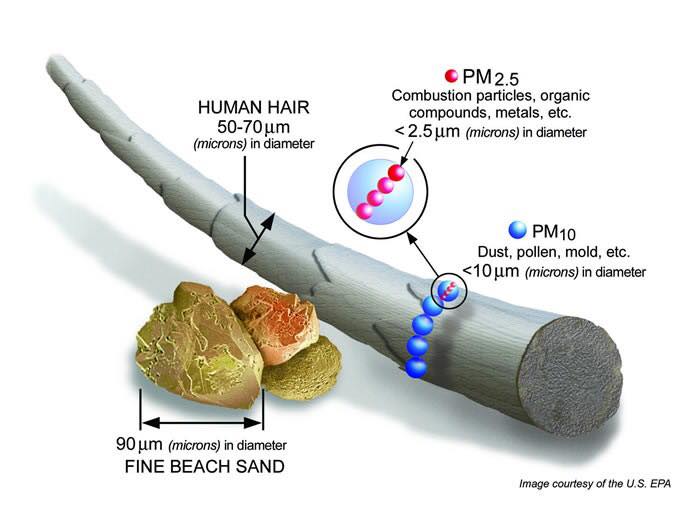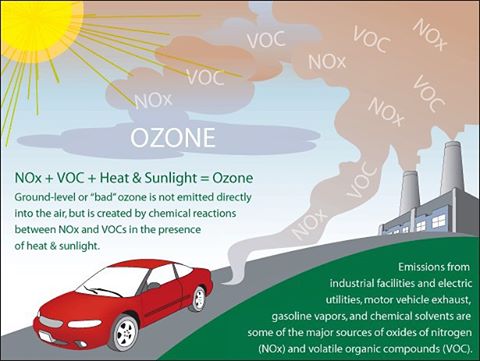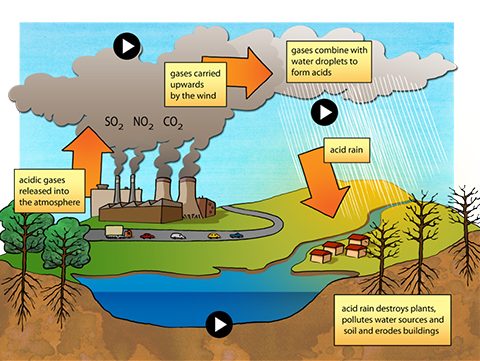Advancing Healthy Air
What is Air Pollution?
Pollution refers to substances that are released into natural environment that can cause harm. (That is, pollution by definition is detrimental to people, animals, plants, and ecosystems.) Air pollution refers to airborne particles that are released into the ambient air. Air pollution can result from burning fossil fuels, wildfires, volcanos, internal combustion engines (e.g., cars), windstorms, and so forth. Some air pollution is manmade, and some air pollution is caused naturally.
Air pollution is the #1 environmental risk factor for premature death and disease in the world. More than 8 million people die each year as a result of exposure to pollution caused by burning fossil fuels alone. Fighting air pollution is our raison d’etre. We educate the public about the harmful health effects of air pollution and provide the tools needed to make healthy choices. We use the power of the law to strengthen regulations, pollution permits, and enforcement. Our aim is simple: healthier air for everyone no matter their zip code, race, or income. We also offer presentations to community groups, clubs, churches, and other gatherings.
Types of Air Pollution
The Clean Air Act requires the U.S. Environmental Protection Agency to set National Ambient Air Quality Standards, or NAAQS, for six common air pollutants — also known as “criteria pollutants.” These are: carbon monoxide, lead, ground-level ozone, nitrogen dioxide, particulate matter, and sulfur dioxide. These common air pollutants are found all and come from various sources such as coal-fired power plants, factories, cars, and trains. All of the criteria pollutants can be harmful to your health and the environment. Below are brief descriptions of the three GASP is most concerned with: ground-level ozone, particulate matter, and sulfur dioxide.
In addition to criteria pollutants, the Clean Air Act also regulates a category of pollutants called “hazardous air pollutants,” or HAPs. These are also referred to as “air toxics.” HAPs are pollutants that are known (or suspected, based on ample scientific evidence) to cause cancer and other very serious health problems. There are 188 HAPs listed by the Environmental Protection Agency. (In fact, GASP was a part of the effort that secured the 188th pollutant in 2022!)
Below we have listed three of the major pollutants of concern in the Greater-Birmingham area: particulate matter, ground-level ozone, and sulfur dioxide. We’re constantly updating our website with new resources and additional information, so please bookmark this page!

Particle Pollution
Particle pollution, also known as particulate matter (or just “PM”) is made up of tiny solid particles and liquid droplets in the air. PM comes in many different shapes and sizes and can include everything from acids (such as nitrates and sulfates), organic chemicals, and metals, to microscopic bits of soil, pollen, and dust. These particles are breathed into your lungs and can even get into your bloodstream. There is no safe level of exposure to particle pollution.
Ozone Pollution
Ground-level ozone is created by chemical reactions between oxides of nitrogen (NOx) and volatile organic compounds (VOC) in the presence of sunlight. Ozone is the most common air pollutant in the United States. Breathing ozone pollution can trigger a variety of health problems including chest pain, coughing, throat irritation, and congestion. Children, seniors, and people living with chronic diseases (such as asthma, diabetes, COPD, and more) are at the most risk.
Sulfur Dioxide
Sulfur oxides (SOx) refers to a group of compounds that contain sulfur and oxygen. SOx can be harmful to humans and the environment, but sulfur dioxide, or SO2, is the pollutant of most concern. Emissions come primarily from power plants that burn fossil fuels to generate electricity, along with industrial processes and some “dirty” forms of transportation. Sulfur dioxide can cause respiratory problems; people with asthma are particularly sensitive to breathing SO2.Air Quality Widget
The air quality report should be as accessible as the weather report. The Air Quality Widget pulls air quality data twice an hour directly from AirNow.gov, the official air quality reporting website. It also displays the air quality forecast for the following day when it becomes available. *Be sure to clear your cache to ensure you receive the most recent information.
You can now embed the air quality widget on your website! It has a fixed width of 280px, and the height can change based on the font you use. The widget updates twice an hour.
How to Install the Widget
- Highlight and copy code from the following box:
<script id="gasp-load" src="http://www.gaspgroup.org/widget_airquality_inline.js.php" type="text/javascript"></script>
- Find a location to put it in your website’s source code.
- Hit Control + V to paste the code.
- Save your page and upload it to your server.
- Check your page and verify the widget works.
The Air Quality Index
The EPA reports air quality through a measurement it devised called the “air quality index,” or AQI. The AQI is a helpful tool for you to understand how polluted the air you are breathing is, as well as any health concerns to watch out for.
Report Air Pollution
Whether you see a plume of smoke or smell something, you should always report that instance of air pollution. This is a brief guide for what to report and how.
Document It. If you see air pollution (for example, a plume of black smoke) take pictures. Not only is this evidence of the problem, but it helps identify the type of pollution and source of the problem you’re dealing with. Submit a complaint to the regulatory agency. In Jefferson County, you report air pollution to the Department of Health (JCDH). When you submit your complaint, be very specific. Include the date and time you noticed the air pollution. If you experienced a smell, describe it as best you can. (For example, did it smell like tar or rotten eggs?)
Report It. The best ways to report pollution to JCDH are:
- Call 205.930.1276 or 205.930.1230
- Email your videos and pictures to [email protected].
Tell GASP. After you report the pollution to JCDH, tell us. We will do our best to help you investigate and solve these issues. Share your complaint with us by clicking on the button below.

